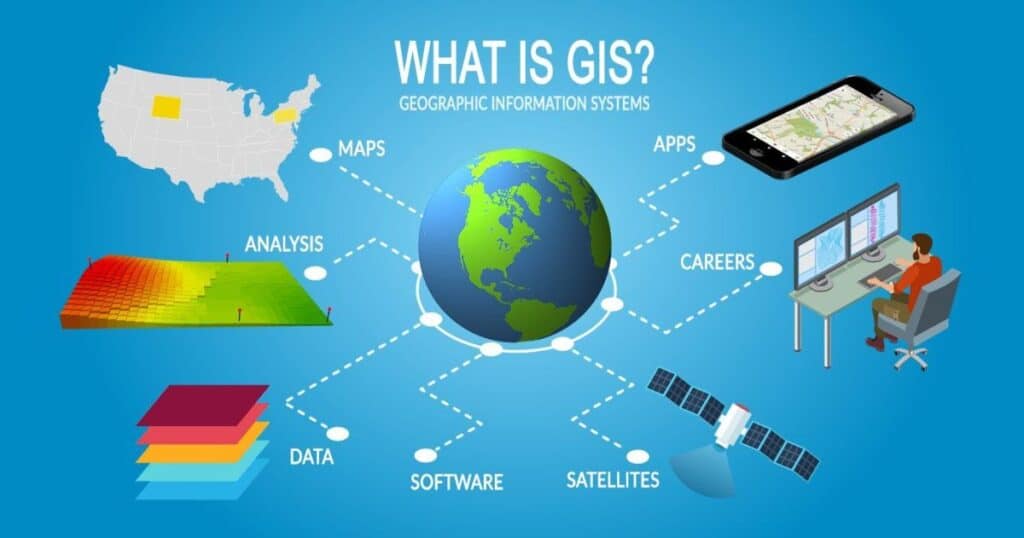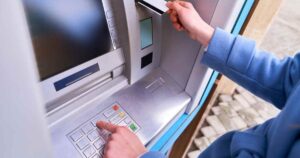GIS, or Geographic Information Systems, is like a smart map that helps businesses make better choices. It collects information about places and puts it on a computer. This helps companies decide where to open new stores, find customers, and even protect the environment.
Unlock the power of intelligent decision making for your business. Explore how GIS, a digital map wizard, can revolutionize your choices, showing you how to transform data into insights. Discover how could gis help businesses make better decisions and elevate your success with its magical capabilities.
Imagine you are running a lemonade stand. GIS is like a magical tool that tells you where lots of thirsty people are. It shows you the best spots to set up your stand, like near a park on a hot day. It also helps big companies do things like find the best place to build a new factory or deliver products faster. It makes businesses smarter by using maps and data to make choices.
Define Your Problem And Objectives With Gis

When we talk about defining our problem and objectives, it is like starting an adventure. First, you need to know what kind of journey you want to go on. With GIS, it is similar. You must figure out what you want to solve or achieve. For example, you might want to find the best place to open a new playground, or maybe you want to know where lots of people live to sell ice cream. Defining the problem and objectives helps you use GIS like a treasure map to reach your goals.
Imagine you are a detective, and GIS is your secret tool. You use it to understand the mysteries of your city or even the whole world. It helps you decide where to build, where to help, and where to explore. By defining your problem and objectives, you are like a super detective, ready to solve any puzzle and make the world a better place.
Choose And Acquire Relevant Data For Better Decision-Making With Gis

When using GIS to make better decisions for your business, one of the most important steps is picking the right data. Imagine you are making a puzzle, and the pieces are like data. You want the pieces that fit together to get the whole picture. First, you have to decide what kind of puzzle you are making. If it’s about finding good spots for a new ice cream shop, you need data about things like people’s favorite ice cream flavors and where they like to hang out.
Once you know what pieces you need, you have to go find them. This is called data acquisition. You might get data from surveys, maps, or even special sensors. It’s like collecting puzzle pieces from different places. But remember, the pieces have to be the right ones, or your puzzle won’t look right. Choosing and collecting the correct data helps you make intelligent choices with GIS.
Data Selection Strategies
Data selection means picking the best puzzle pieces for your decision making puzzle. Think of it as choosing the right ingredients for your favorite sandwich. You need to decide what kind of sandwich you want and then get the right ingredients, like choosing turkey or ham for your sandwich. In this, you pick data that matches your decision making needs.
Data Acquisition Methods
- Data can be collected from different sources like satellites, surveys, or other companies.
- Sometimes, businesses buy data from specialized providers.
- They can also use their own tools to gather data, like sensors in their stores or on delivery trucks.
- The goal is to get the most accurate and useful data to help with decisions.
Data Integration And Quality Assurance
Once you have your data ingredients, you need to make sure they work well together, like you’d want your sandwich to taste good. Data integration means combining all your data pieces so they make sense. Quality assurance is like checking that your sandwich ingredients are fresh and safe to eat. In this, it’s essential to make sure your data is accurate and fits together correctly for better decision making.
Analyze And Visualize Data Using Gis For Improved Decision-Making
Imagine you have a super duper map, like in a video game, but for real life. That’s what GIS (Geographic Information Systems) is all about. It’s the tool that helps businesses understand how could gis help businesses make better decisions, just like a superhero in the real world. First, it collects tons of information about places, like where people live, where stores are, and even where trees grow. Then, it puts all this information on a computer. Here’s the cool part: it can make pictures and graphs from this data. It’s like making a treasure map.
Now, let’s say you have a store, and you want to know where most customers live. It can help it make a colorful map that shows which areas have lots of customers and which ones don’t. This helps you decide where to open new stores or where to send ads to get more customers. So, using GIS is like having a unique map that tells you where the treasure (customers) is hidden.
Communicate And Share Results For Informed Decision-Making With Gis
Okay, so you have used GIS to find the treasure (lots of customers). But what’s next? You need to tell your team and your boss about it. That’s where GIS becomes a superhero communicator. It can take the maps and graphs it made and show them to everyone. So, if you want to tell your boss we should open a new store in this area, you can use GIS to show the map with lots of customers.
Not just that, you can share these maps and graphs with your team, your friends, or anyone who needs to know. This way, everyone can see the critical information and make intelligent decisions together. It’s like having a magical storyteller who uses maps to tell the most exciting tales. So, with GIS, you can share your discoveries and help your team make really good choices.
Follow Standards And Ethics To Ensure Gis Supports Better Decisions For Businesses
Using this, or Geographic Information Systems, to make better decisions in businesses is super cool. But, just like when we play games, there are rules to follow. These rules are called standards and ethics. They make sure that GIS is used in a fair and safe way. First, we need to keep our data safe and sound. That’s where Data Integrity and Privacy Compliance come in.
It’s like locking your secret diary so nobody can peek inside. Next, we must use GIS reasonably. This means not using it to trick people or make unfair choices. Last, we must always keep learning and improving how we use GIS. Think of it like getting better at your favorite game with practice. When we follow these rules, GIS becomes a super helpful tool for businesses to make better.
Data Integrity And Privacy Compliance
Just like keeping your secrets safe, businesses need to keep their data safe, too. This is called Data Integrity and Privacy Compliance in GIS. It means making sure all the information is accurate and secure. Imagine having a treasure map – you wouldn’t want anyone else to find it, right? That’s why businesses need to protect their data so it doesn’t fall into the wrong hands.
Ethical Use Of Gis In Decision Making
Using GIS is a bit like playing games, but we should always play fair. Ethical Use of GIS in Decision Making means using it in a good and fair way. It’s like not cheating in a race. Businesses make better choices that are fair to everyone and do not use GIS to trick people. It’s all about being honest and kind.
Continuous Monitoring And Improvement
Like getting better at your favorite game, businesses need to keep getting better at using GIS. Continuous Monitoring and Improvement means always trying to do things better. It’s like practicing to become a soccer star. By checking what works and what doesn’t, businesses can make smarter decisions and use GIS to its full potential.
Here’s What Else To Consider For Leveraging Gis In Decision-Making
When using GIS (which stands for Geographic Information Systems) to help make important decisions, there’s more to think about. First, remember to keep your information up-to-date. Maps and data change, so you need to make sure you are using the latest ones. Second, think about the costs. It can be powerful but might also cost money. So, plan your budget wisely to make the best choices for your business. Last, don’t forget to train your team. Teaching them how to use it can make your decision making even better.
Another vital thing to consider is teamwork. Working together with others can make that even more helpful. Share the excellent maps and insights with your team members, and listen to their ideas, too. Also, remember to be patient. Learning to use it might take some time, but it’s worth it. So, keep learning and practicing. With these things in mind, you will be a GIS expert in no time, making super intelligent decisions for your business.
Conclusion
So, to sum it up, it is like a magical tool for businesses to make better, showing them how could gis help businesses make better decisions. It helps them make good choices in reality, like deciding where to open stores or finding customers. Learning how GIS works might seem a bit tricky at first, but with practice, it becomes super helpful. It is like having a treasure map to success, guiding businesses on how they could use it to make smarter decisions and achieve their goals. So, remember, it can be your secret weapon for making better business decisions.
Remember, it helps businesses because it shows them the way, like a helpful guide. It is like having a unique map that reveals secrets about places. With GIS, businesses can be super bright and make decisions that make them grow and be successful. So, next time you see a map, think about how it could be helping businesses make better choices, like magic.








